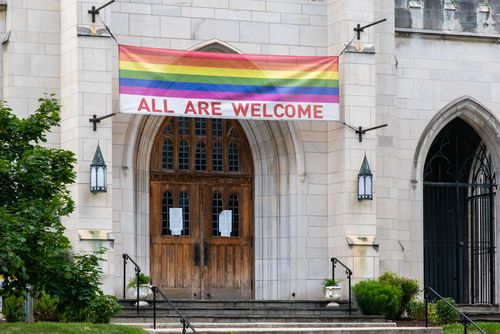 Creating an atmosphere at your church that communicates hospitality and welcome to all people is likely a fundamental part of your organization’s goals. You seek to assure all who walk in the door that their presence is wanted, and you probably go out of your way to help them feel as if they belong in your congregation. While this practice is sufficient for most of the visitors who try out your services, others may be more skeptical.
Creating an atmosphere at your church that communicates hospitality and welcome to all people is likely a fundamental part of your organization’s goals. You seek to assure all who walk in the door that their presence is wanted, and you probably go out of your way to help them feel as if they belong in your congregation. While this practice is sufficient for most of the visitors who try out your services, others may be more skeptical.
A solid welcome statement helps you bridge the gap between members and newcomers. It should be a clear declaration of what you believe and how that extends to the way you treat people. Ultimately, it serves as your promise to those who are seeking a new church home.
Reasons Your Welcome Must Be Clear
It is easy for church leaders to get into the habit of what they do every week without really thinking it through. Newcomers don’t have the luxury of worship by rote, though. Even if they have a history with other communities of faith, they don’t necessarily understand the nuances of your particular practices and rituals. Your welcome statement isn’t going to cover all the details, of course, but it can help them understand the core principles on which the service is based.
Other visitors are likely to bring fears and doubts with them, even as they participate in the service. If they identify with groups that have been marginalized by the church at large, such as LGBTQIA+ believers, they may need to know that the harm they have experienced in the past will not be revisited on them in your congregation. Communicate your inclusion of these groups very clearly in your welcome statement.
Elements To Include
Every welcome statement is different. Some are broad, and some make expectations for visitors clear so that they know how to properly participate in the service. If you want your church to be a place where people feel comfortable as soon as possible, your statement should include certain elements:
- Overview of your basic belief system
- Summary of what to expect in the service
- The church’s antidiscrimination commitment
- Invitation to join the life of the church
Welcome statements are as varied as the faith communities that offer them. It’s important that your statement is specific to your particular organization. Think about the things that your church does particularly well, and highlight those values in your welcome.
The Importance of Accountability
Once you have a statement drafted, it’s vital that you take an honest look at the way your church functions to see how it measures up to the promises made. Nothing can turn away visitors faster than signs of hypocrisy. When you welcome people to your church, you want to make sure that you are actually living out the values that you outline in your statement.
This doesn’t have to be an exercise in discouragement. View it as a challenge to healthy growth. If your welcome statement claims that you include people regardless of gender identity or sexual orientation, ask yourself how your church puts that particular value into practice. Do you have LGBTQIA+ members in leadership positions? Do they participate in church events? Do their partners seem to feel welcome to attend with them? It is easy to be nice to people who are differently abled, but an assessment of the accommodations you have in place, such as a sign language interpreter, captions for videos, ramps and grab bars, will reveal how much effort you make to really welcome them. If you find that your reality falls short of your promises, you know you have some work to do.
Coming up with a welcome statement that reflects your faith community may be a little more difficult than it seems at first. In the long run, however, you will have a clear message that helps visitors feel at home when they walk through the door.



